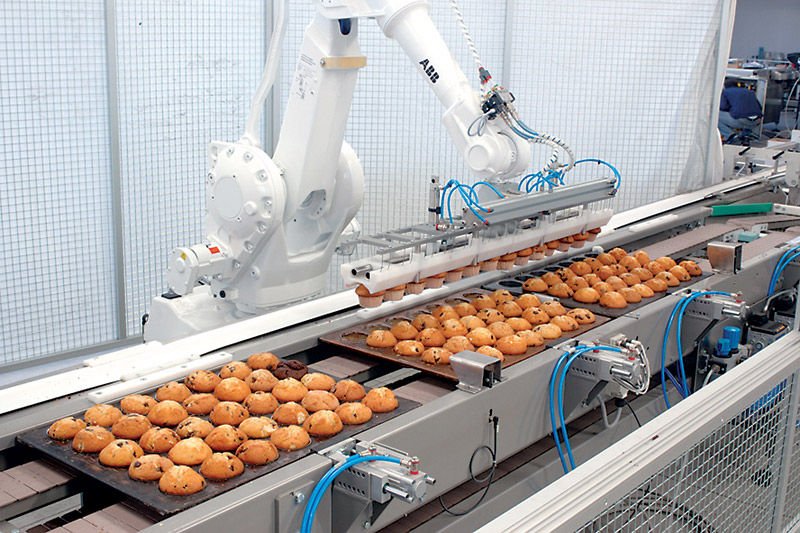How COVID-19 has accelerated the adoption of automation in the food industry
By Alyssa Restauro – systems wizard at 3P Partners, food & agribusiness executive search firm
In food production, it is important that the tools, machines, and technology are safe enough to handle the food that enters your family’s homes. Since COVID-19 hit the world, the food industry has shifted their focus to low-touch and high performing processes that can only be achieved with robotics and automation. The food industry has been slow to adopt robotics, but the pandemic has accelerated adoption due to the benefits of increased food safety and hygiene, quality, efficiency, and scalability.
Food Safety & Hygiene
COVID-19 has been a catalyst for increased assurance of hygiene and safety. Kristen Runvik’s article, How Robots are Changing the Food Industry, highlights the risk of foodborne illnesses and what is at stake for a company’s reputation. With the help of powerful machines and automation, food manufacturers can streamline their processes and reduce the physical touching of raw materials in early stages, offering a cleaner final product. 2020 consumer trends have highlighted a higher demand for safe and healthy foods. Investing in automation enables food companies to produce higher quality products in higher volumes while conforming to increased food safety and hygiene regulations.
To ensure these food-handling robots are in fact a safer measure, standardized requirements such as the 3-A Sanitary Standard Robot-based Automation Systems, RBAS, have been implemented to measure the “minimum sanitary hygienic requirements for design, materials, fabrication, and installation of the robot” according to Control Engineering. Food Science is now faced with a new, added element of danger when these machines contract their own set of bacteria and require certain cleaning methods. However, many of these machines perform self-cleaning, or cleaning functions that can run during late hours of the night.
Quality
GlobeNewswire highlighted that there is an increase in the use of agricultural grippers, to gently handle food products like fruits and vegetables. AGVs, or automated guided vehicles, have been incorporated into manufacturing processes to support the packaging functions and the safety of the labor force responsible for it. In addition to RBAS and AGVs, there are technology based applications, such as sensor networks, that securely store data that measure consistency and quality, explains Andrea Paoli, Head of Manufacturing for University of Lincoln. Automation has taken tedious production line tasks for functions such as packaging and eliminated risk of human error and contamination form proximity that is common in dense manufacturing environments.
Automation & Efficiency
The food industry seeks not to replace human labor with automation, but to reduce risk of contamination and streamline efficiencies by reducing human error. In a previous blog entry, our team has commented on the paradigm shift occurring due to the shelter in place order. Companies started to realize the benefits to a remote workforce, which accelerated the modernization to reduce the headcount required for floor-level personnel for safety reasons. The unintended benefits have been an increase in quality, cost, and efficiency. Now, machines can manage multiple repetitive tasks in one shift with no breaks. With automation comes predictability and improved traceability, which is further protected through continuous improvement and enhanced with lean manufacturing practices.
Scalability
While the introduction of automation presents new challenges in the food industry, food production is expected to thrive by the year 2030, feeding a predicted 8.5 billion people, says Andrea Paoli. The use of arm tooling, and gripper machines will enhance food production and make up for unkept products such as row crops left at the end of a harvesting season, or pollinate crops neglected from pollination. Automation has been proposed in many areas of the food industry, such as farming, dairy processing, poultry, and beef processing, etc. This means there is a greater output of ready-to-eat delivery foods, and large batch foods, while still reducing waste. During this quarantine period, there is a greater need for sterilized environments, which robots can promote, while simultaneously increasing a greater yield and decreasing downtime.
Summary
Robotics and other methods of automation have played a disruptive role in traditional food manufacturing. While robotics is still in its infancy in 2020, we have acknowledged the trend toward investing in automation as our clients in food manufacturing realize the benefits of higher quality , consistent 24/7 production, reduced cost and labor, increased safety, and overall improved efficiency.

